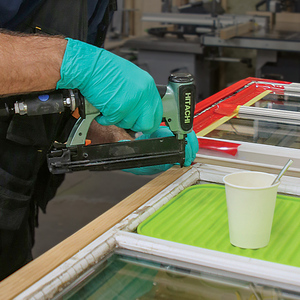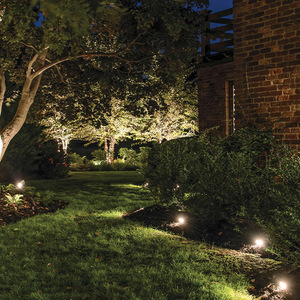I have an antique solid oak pedestal table that needs to be refinished – the finish on the top has worn through in several spots to bare wood. My plan is to sand it down and refinish it, so I’m hoping for some input on how fine of a grit paper the last sanding should be and also the best finish to use for it once sanded? I presumed it had some sort of polyeurethane finish on it when I bought it (it had been refinished recently when I purchased it several years ago, so not the original finish), but I could be wrong. Just wondering what suggestions folks have for a new finish? It was used as a dinner table and saw a fairly heavy use due to small kids etc., so something reasonably tough.
Discussion Forum
Discussion Forum
Up Next
Video Shorts
Featured Story

Listeners write in about fire-rated doors, using seven minisplits for cooling, and how to build a second-story addition.
Featured Video
How to Install Cable Rail Around Wood-Post CornersHighlights
"I have learned so much thanks to the searchable articles on the FHB website. I can confidently say that I expect to be a life-long subscriber." - M.K.
Fine Homebuilding Magazine
- Home Group
- Antique Trader
- Arts & Crafts Homes
- Bank Note Reporter
- Cabin Life
- Cuisine at Home
- Fine Gardening
- Fine Woodworking
- Green Building Advisor
- Garden Gate
- Horticulture
- Keep Craft Alive
- Log Home Living
- Military Trader/Vehicles
- Numismatic News
- Numismaster
- Old Cars Weekly
- Old House Journal
- Period Homes
- Popular Woodworking
- Script
- ShopNotes
- Sports Collectors Digest
- Threads
- Timber Home Living
- Traditional Building
- Woodsmith
- World Coin News
- Writer's Digest


















Replies
Those of us that are in the business normally use a chemical stripper to remove the old finish completely. We use plastic scrapers, putty knives and card scrapers, being careful not to mark the wood. Sanding should be kept to a minimum and may not be necessary. If the table is veneered, it won't take much to sand through. A light hand sanding, no power sanders, with 220 should be all you need after stripping. I would advise against sanding off the existing finish.
There is no such thing as "the best" in just about everything. Don't make the mistake of practicing on the table. Get a substantial piece of oak, slather it with the stripping mess, then strip it for a sample. You want an easy to apply, durable finish that will stand up to spills, cleaning chemicals, abrasion, food acids and alcohol. Something like a wipe on polyurethane meets all that criteria. I would use a satin gloss given your experience level.
Thanks - I hadn't thought about using stripper but that makes sense. It's a solid oak table (no veneer) but still I can see why sanding is discouraged.
Here's some pics of a 100+ year old chair I'm refinishing:
If you like this look, here's the schedule:
- strip with regular stripper (Methylene Chloride)
- rinse well with pure isopropyl alcohol
- sand with 120
- fill grain (I used Timbermate, but I've heard good things about Famowood too).
- sand filler with 400 when dry. If you're real fussy, do a second coat, dry, sand. Vacuum or wipe clean.
- two coats of "special sauce". (1/3 pure Tung oil, 1/3 boiled linseed oil, 1/3 gloss poly.) Apply with foam brush. Let dry for a week. Then apply second coat. Let dry for a week. Don't even think about applying a water based poly over this mixture; it will not adhere.
- three coats of gloss poly cut 50/50 with mineral spirits. This basically makes for a wipe-on poly. I applied it very sparingly with a foam brush. Scuff with 400 sandpaper between coats.
- one or two coats of satin poly, depending on how glossy (or not) you like.
(By the way... you might be better to ask this question over at Knots....most people here at BT deal with houses, not furniture.)
And, of course, be careful with any rags or papers soaked with a linseed oil product -- spontaneous combustion is not just for horror movies.
>>>spontaneous combustion is
>>>spontaneous combustion is not just for horror movies.
Zackly. No rags were harmed in the refinishing of this chair.....
dgale
Look up on the left at the top-in the box with your name on it-down aways in that box is Knots Forum and All Forums. That should provide a link to knots and the others..............
eventho you're signed in here, you'll probably have to sign in with your email address and password to get into the other sites...............DO NOT MAKE a new password for the same email-use the same you have here...................
I think.